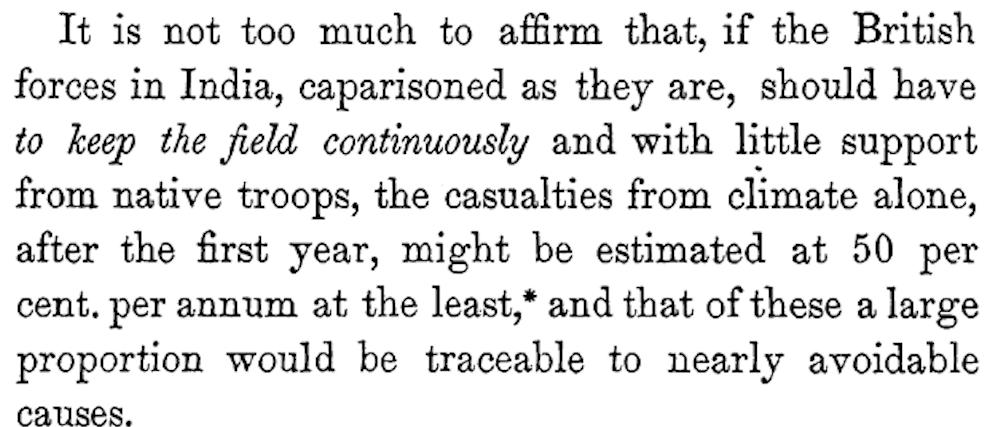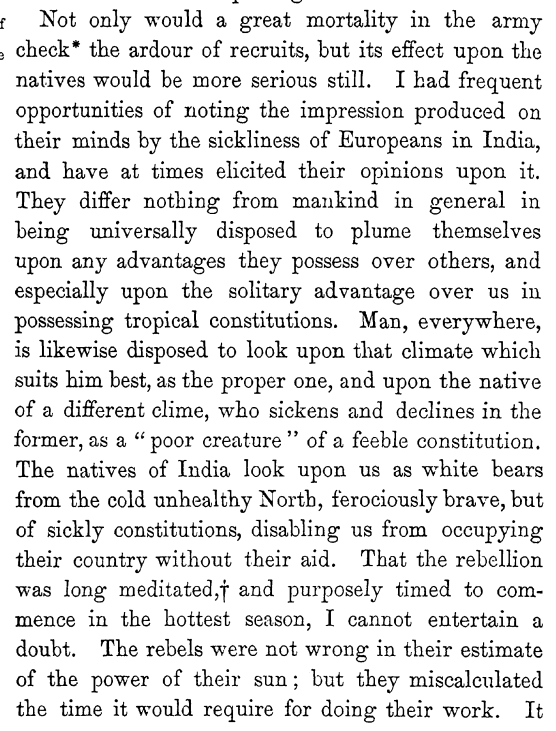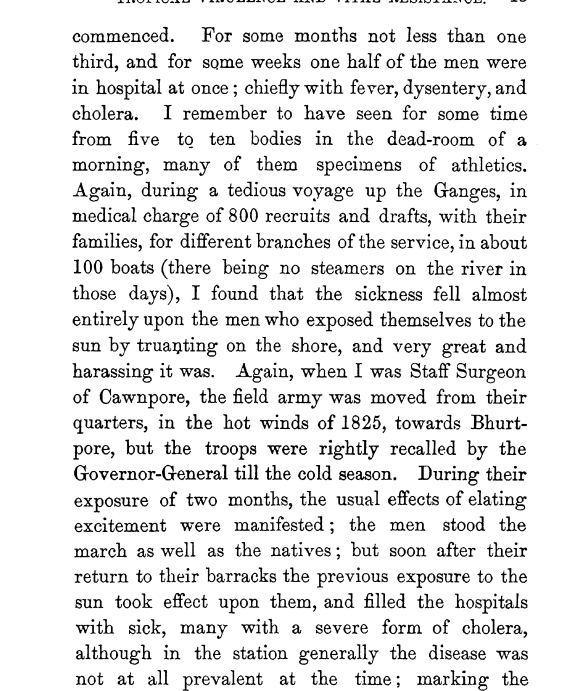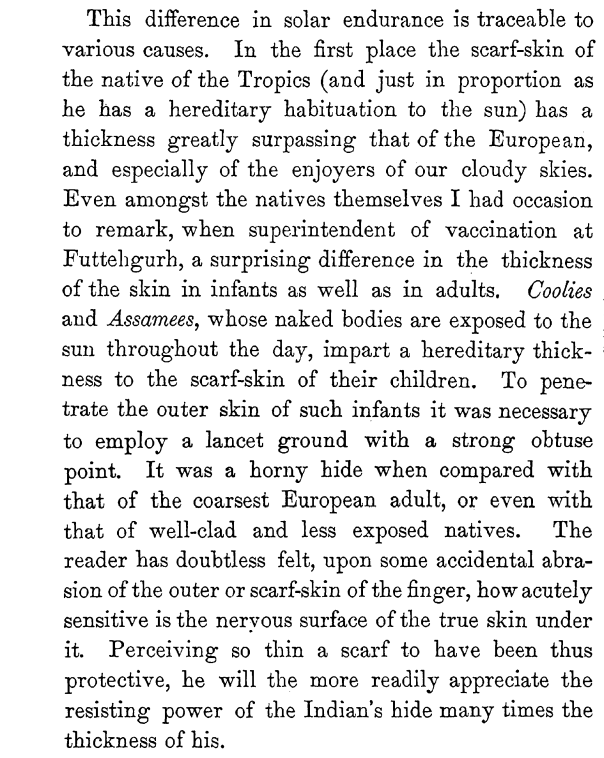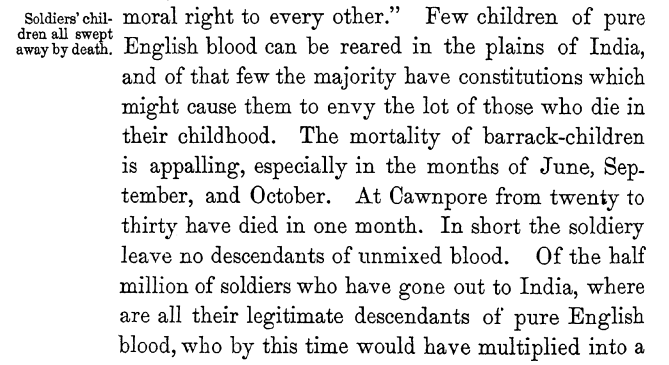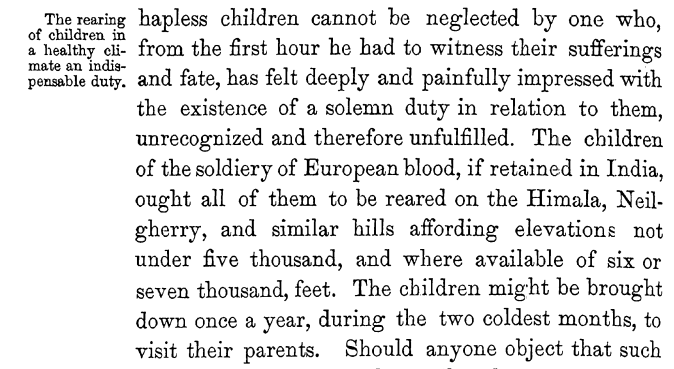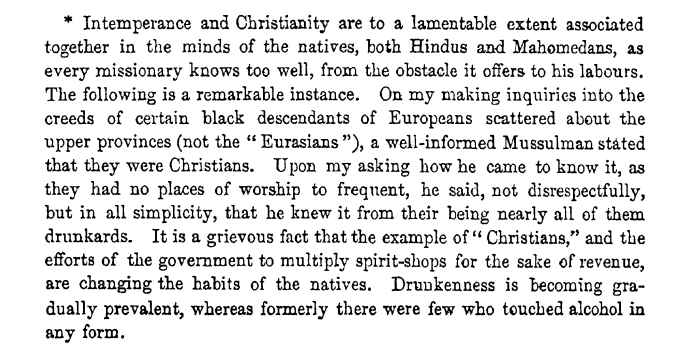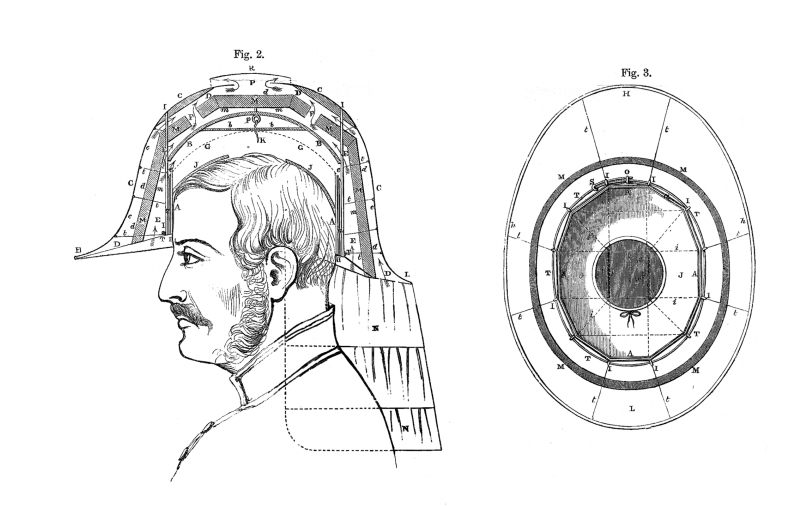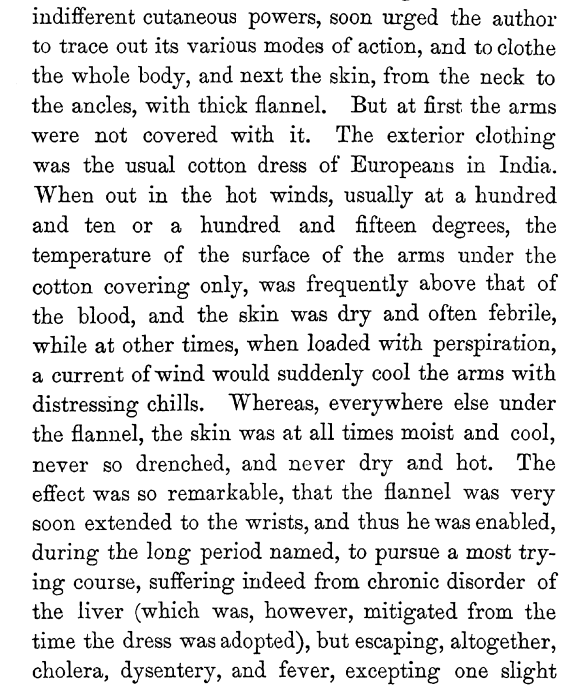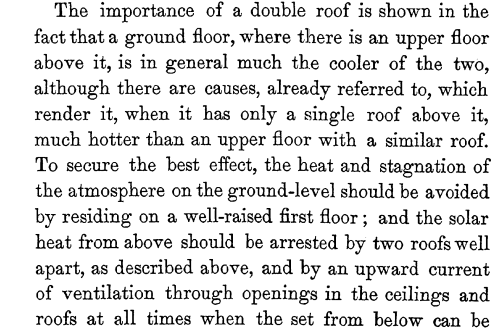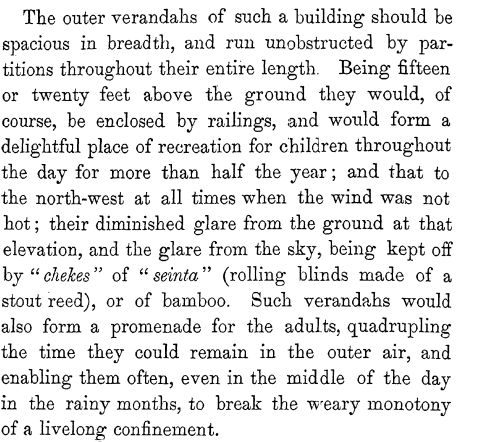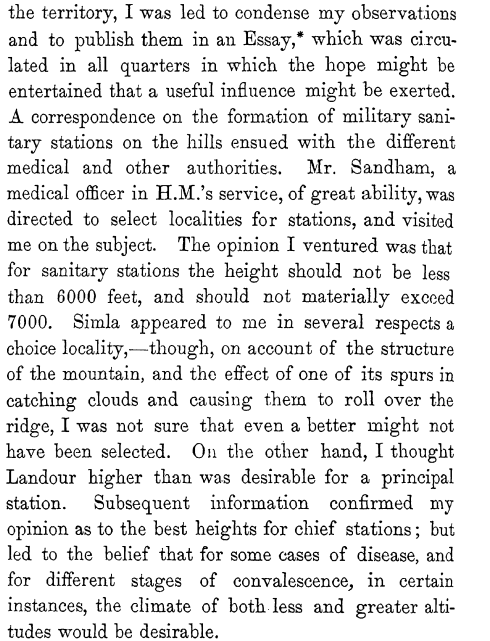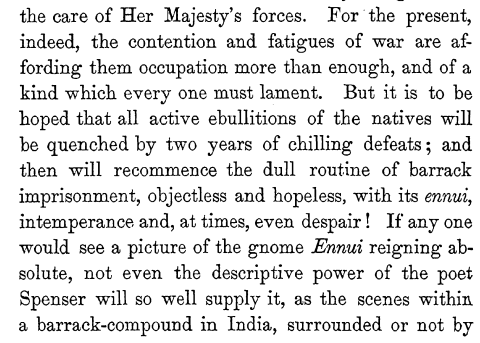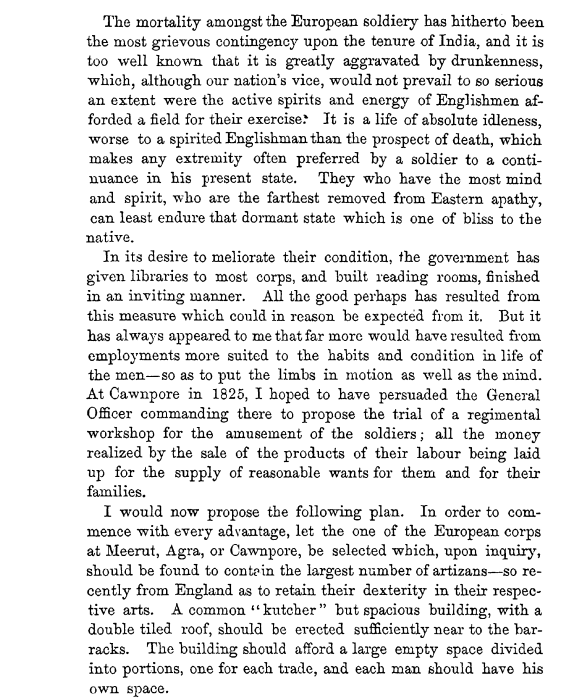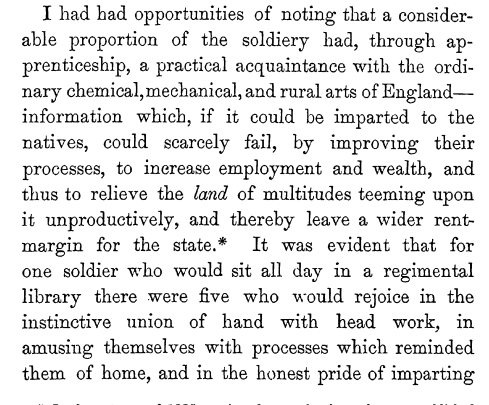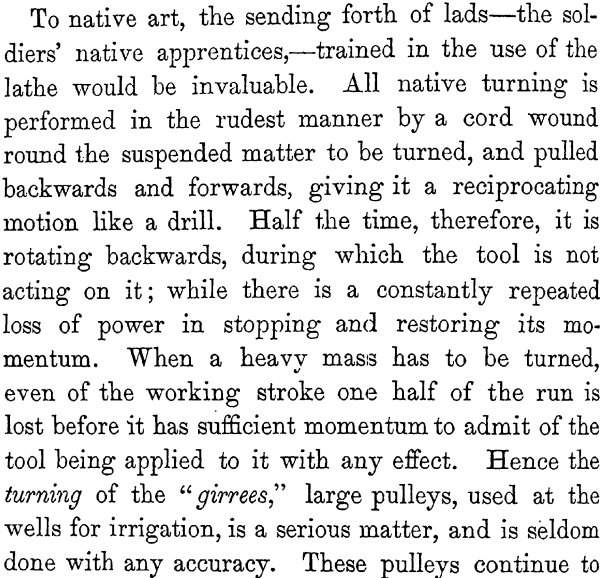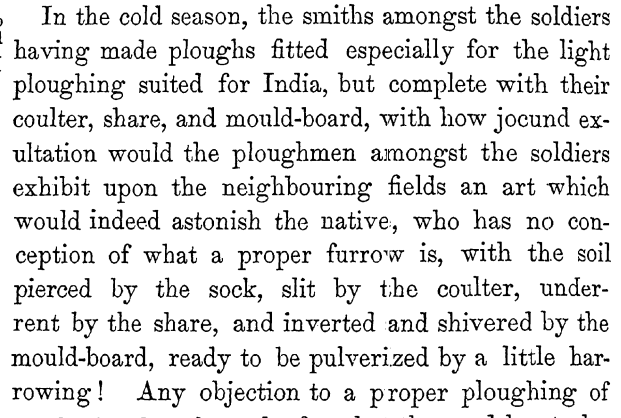Julius Jeffreys (1800-1877) was a British army surgeon and a prolific writer who spent a long time India . He invented the respirator and developed some of the early air conditioning systems. He was also a champion of welfare of British troops serving in India and tropics.
In his 1858 book "The British Army in India: its preservation by an appropriate clothing, housing, locating, recreative employment, and hopeful encouragement of the troops.",he describes the plight of British troops in India and gives suggestions for improving their conditions.
He begins with pointing out that the biggest enemy of the British soldier stationed in India is the climate and more specifically the high temperature and exposure to sun.
We note here that the royal commission on sanitary state of Army in India appointed in 1859 confirmed high death rate at 69 per thousand, among British troops in India, in the years leading upto the mutiny of 1857.This was 3 times higher than the worst regiment in Britain.
Jeffreys adds that such poor health of British troops had a negative effect on the minds of natives who saw British as men of sickly constitution. He also says that rebels deliberately timed 1857 mutiny in hottest months of the year to exploit white man& #39;s vulnerability to heat.
He then proceeds to give some specific examples of harmful effect of exposure to sun on the British soldiers.
He concludes that no amount of acclimation would make British soldiers more tolerant to the heat and exposure to sun and the best course of actions was to reduce their exposure to heat. Among other things he compares their skin to that of the natives to make his point.
He also makes an emotional appeal to immediately address the issue of high death rates of the children of the British soldiers. He paints a gloomy picture of the fate of the British children brought up in India.
As a solution he recommends that these children of European blood should be reared in on Himalayas, Nilgiris and other such hill stations which have an elevation of at least 5000 feet.
Jeffreys further points to the widespread intemperance among the British troops in India. He says that in addition to bad habits brought from, an uneasiness of mind and body caused by a climate that kept them indoors were the main causes of this intemperance.
He says that this was not only lowering the prestige of of the soldiers but also nullifying the efforts of the missionaries as intemperance and christianity were strongly associated in the minds of the natives.
Jeffreys gives many recommendations in the book to improve the helmets, clothing and housing for British troops. He also gave suggestions to make the lives in barracks more interesting for the British soldiers so that intemperance could be controlled.
He explains the various processes by which effects of heat on the body increase or decrease and then criticises existing clothes and hats arguing that they accumulated heat, especially on the head.
He then proposes new designs of helmets that had ventilation based on convection.
He then proposes new designs of helmets that had ventilation based on convection.
One of the proposed helmets had double layered outer shell and ventilated spaces between wearer& #39;s head and inner surface of the shell so that the hot air trapped inside the helmet could escape. He recommends attaching neck curtains to all helmets to protect lower part of neck
Jeffreys also proposed to cover the helmet with a reflective metallic surface to minimise the absorption of the sun& #39;s ray and prevent
" excessive heat on the brain which produces moral depression. "
" excessive heat on the brain which produces moral depression. "
In matter of clothes, he criticises the existing practice of soldiers being covered in tight fitting jackets and trousers as they retained too much heat. He also argued against the popular opinion that light clothing was best to deal with heat.
He argues that in Indian conditions a protective partition between the skin and the atmosphere was required and recommended that a "slow conducting, porous and spongy medium " such as flannel should cover the whole skin.
Here we note that many of Jeffreys elaborate designs for headgears and other clothing were generally dismissed as impractical. The sola topi in its military versions of canvas, pith and cork became the standard for European troops in summers.
By 1870s the British Sahibs had adopted a "uniform" that consisted of sola topi with pagri, spinal pad and a flannel cholera belt. The topi remained the most obvious mark of the ruling class till the very end of the British rule in India.
In the hills or in cool season, the topi would get replaced by the felt Terai hat that originated with Gurkhas and then spread to other parts of the British empire, particularly South and East Africa where it remained popular till 1960s.
Jeffreys excessive concern with heat was proved to be unjustified as experience of white troops in that fought in China, Burma and India in world war 2 put to rest the belief that white men couldn& #39;t survive the exposure to tropical sun without pith helmets and heavy clothing.
It was found that even minimally dressed and bare headed white soldiers could function whole day in the tropical sun as long as they had plenty of water and could occasionally find some shade.
Coming to the issue of housing, he warns strongly against European soldiers living on the ground floor mainly because of higher probability of falling victim to Malaria near the the ground. He recommended that these soldiers should live upper floors.
He also recommends having a double roof, with a gap of about a yard between the two parallel layers, to provide additional cooling for these upper floor dwellings.
He suggests that such dwellings should have long elevated verandahs as they would provide protection against heat from the ground and hot winds and would serve as a place for recreation for the children ( in case of those not living in barracks)
About location of British troops, Jeffreys repeats his recommendation from a 1824 essay that military sanitation stations be formed in the hills at height of 6000 -7000 feet. The troops were to be stationed in rotation. Many such stations were set up after his 1824 essay.
On food, Jeffreys observed that wheat in military bazaars, when ground into various forms such as atta, maida and soojee, was of inferior quality. Hence, he recommended procuring superior quality grain directly from Zameendars instead of the " Bunniahs".
Finally, in the section name " The recreative employment of the soldier", Jeffreys draws attention to the dull and disheartening character of life in barracks which, he argues, is one of the causes for widespread temperance among British soldiers.
He further says that although the troops had been provided libraries and reading rooms it was not particularly useful as many soldiers were village labourers and artisans and were uninterested in intellectual pursuits who needed other means of relaxation
He proposed that such workshops that keep the soldiers manually and intellectually occupied be set up in various barracks.
Jeffreys argued that such workshops will not only be beneficial to the soldiers themselves but will also help to develop India as soldiers could transfer various useful skills to the natives and help them to improve many processes.
In this section, he also criticises the various processes used by the natives. Here his views on turning and the ploughs used in agriculture
Although controlling intemperance was one of the main goals for such proposals, long after the book was published, alcoholism among British soldiers remained high even upto 1860s and was considered the main cause for diseases such as hepatitis and especially venereal diseases.
This lead to some restrictions on issue of alcohols in canteens and provision for more recreational activities. This lead to a decline in convictions for drunkenness in 1870s but it was short lived and put an end by introduction of short service in 1875.
This increased the % of men under 25 in British Army from 33% to 55% between 1877 and 1898. It had been long understood that these younger men were more likely to acquire intemperance than older soldiers.
This meant that intemperance in the army started rising from mid 1870s. It continued to increase upto the first decade of 20th century.

 Read on Twitter
Read on Twitter